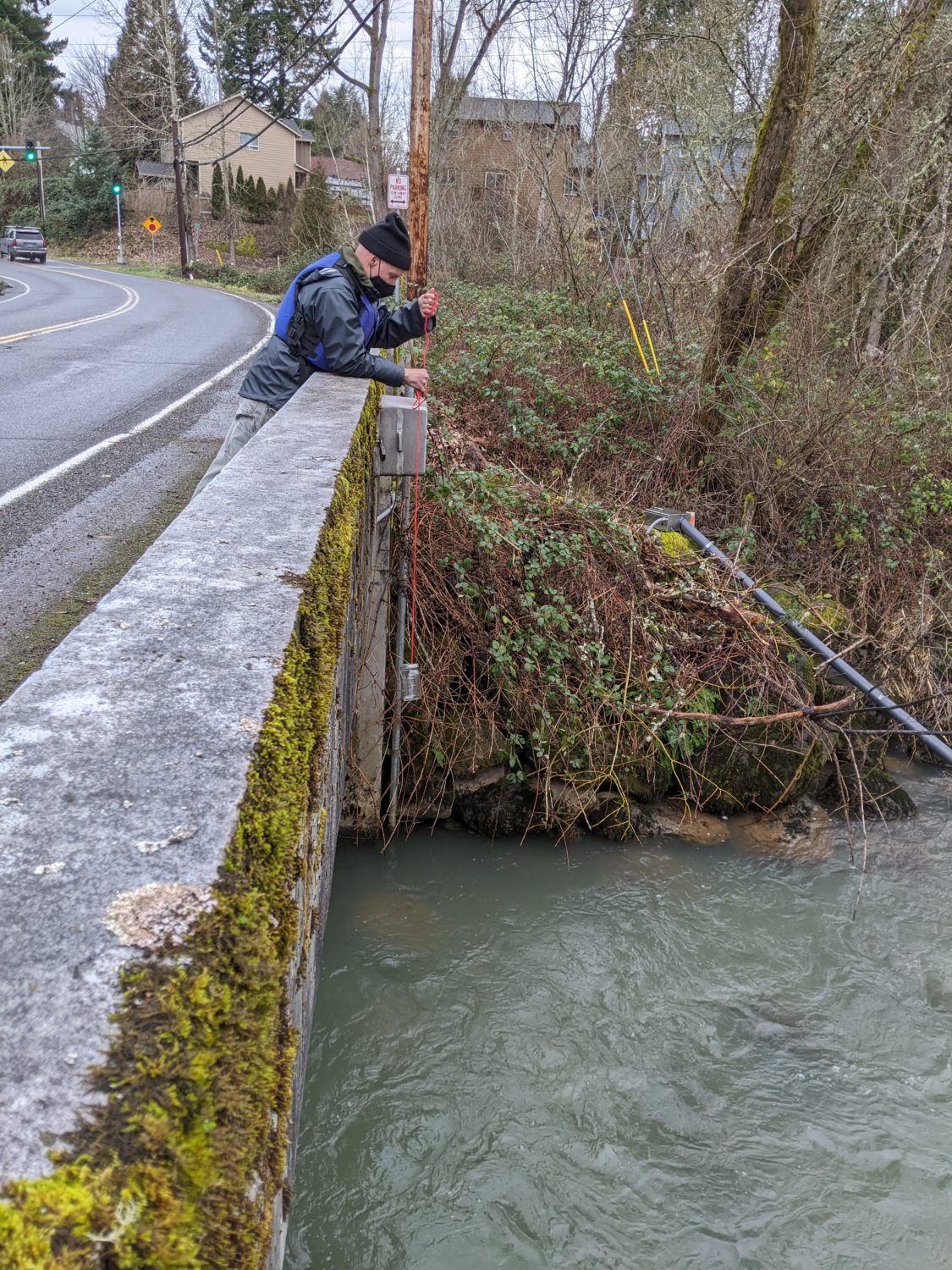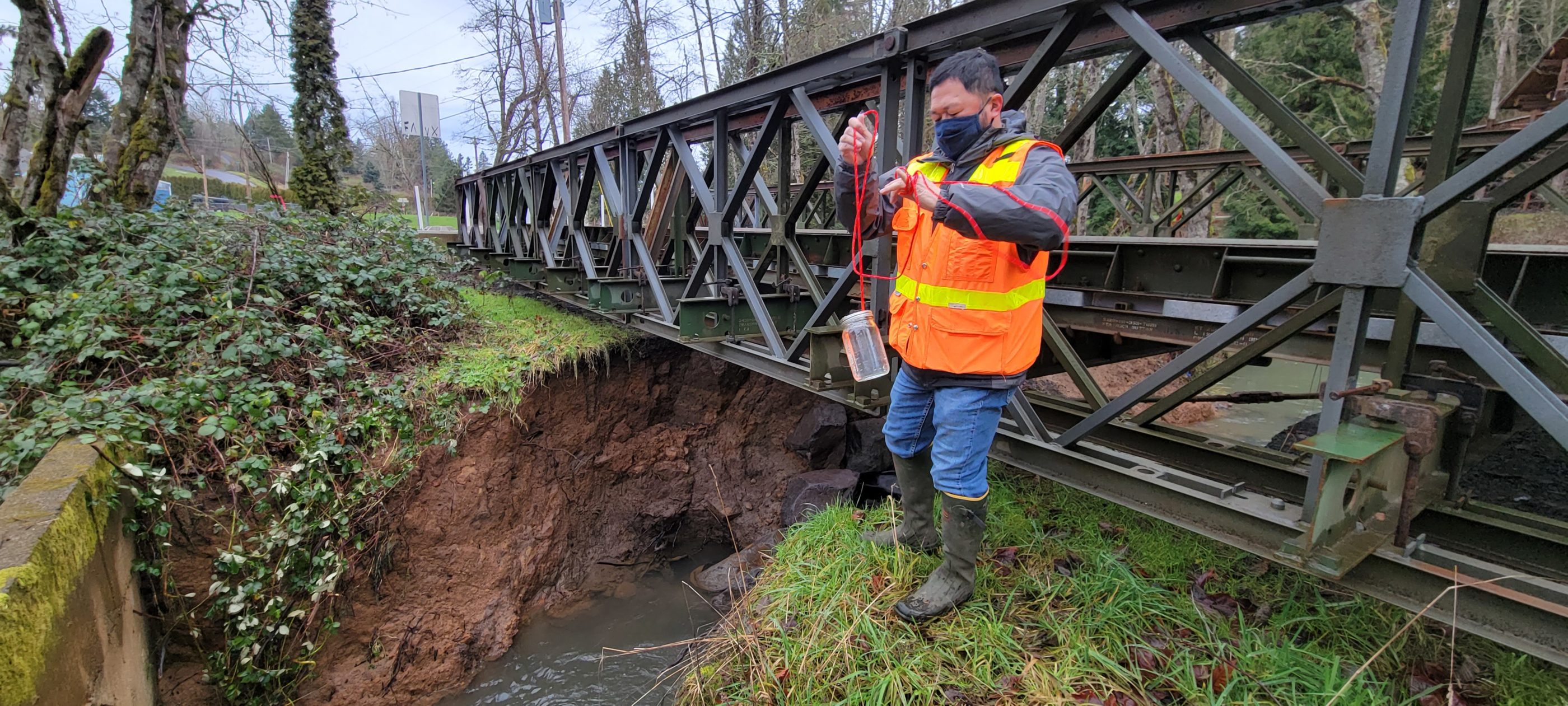On Monday, January 10th Johnson Creek Watershed Council participated in the United States Geological Survey’s first ever Turbidity Blitz event. The purpose of the event was to try to get a “snapshot” of turbidity levels in the Johnson Creek watershed for one point in time. The event measured turbidity at 33 sites throughout the Johnson Creek watershed. Water samples were collected for each site twice using a mason jar dipped into the stream flow between 10am and noon. At some sites the mason jar was lowered down from a bridge using a rope. JCWC helped collect samples at 6 sites. Gwyn even collected all of her samples on her bike!

Turbidity is the measure of the relative clarity of the water, muddy or cloudy water has higher turbidity than clear water. Turbidity levels can rise due to materials in the water, such as sediment from stormwater runoff. Have you ever noticed that during rainy weather the creek tends to appear dirtier? That’s because stormwater runoff carries sediment and other materials into the creek.
Sediment entering the creek is a concern because it can be harmful to habitat. Suspended sediment in the creek can negatively affect salmon health and behavior. Additionally, pollutants can attach to sediment and get carried into the creek in stormwater runoff. These pollutants can be harmful to aquatic life. Dragonfly and damselfly larvae are especially vulnerable because they live in the streambed sediment. For more information regarding turbidity and the water quality concerns associated with it, visit USGS’s webpage on Turbidity and Water: https://www.usgs.gov/special-topics/water-science-school/science/turbidity-and-water
Suspended sediment in streams can be caused by a variety of activities, such as agriculture, logging, grazing, construction, and urban stormwater runoff. Stormwater runoff collects sediment and other pollutants. If the stormwater runoff has a direct path to the creek, all of the sediment and pollutants flow into the creek as well. Filtering or infiltrating stormwater where it lands makes a huge difference by capturing sediment and pollutants before they reach the creek. You can reduce sediment from your yard entering Johnson Creek by by doing any of the following:
- Disconnect your downspouts and direct the stormwater through a stormwater planter or into a rain garden.
- Remove and replace unused pavement with a garden.
- Remove pavement in your driveway to create a Hollywood driveway with a planted strip in the middle.
- Replace pavement and concrete with pervious pavement or pavers, which allow water to soak into the ground rather than runoff.
- Plant large trees in your yard.
In addition to managing stormwater on your property, you can also reduce potential pollutants in the stormwater by reducing your use of pesticides, herbicides, and fertilizers. For more information on managing stormwater on your property, East Multnomah Soil and Water Conservation District has guidance on their website and hosts rain garden workshops: https://emswcd.org/in-your-yard/rain-gardens/

USGS is hoping that this Turbidity Blitz will help to develop a model for data collection events that can be quickly implemented, so gathering watershed wide turbidity measurements for a particular point in time can be done easily and the data can be evaluated for patterns. USGS is hoping to establish a correlation between turbidity levels and pollutant levels so turbidity measurements can help give insight into other water quality concerns.
USGS wants to thank all of the volunteers who took the time to make this happen. Sixteen volunteers participated in the event from various organizations, such as the City of Gresham, City of Portland, Metro, Multnomah County, Oregon DEQ, Clackamas County, and EMSWCD.
